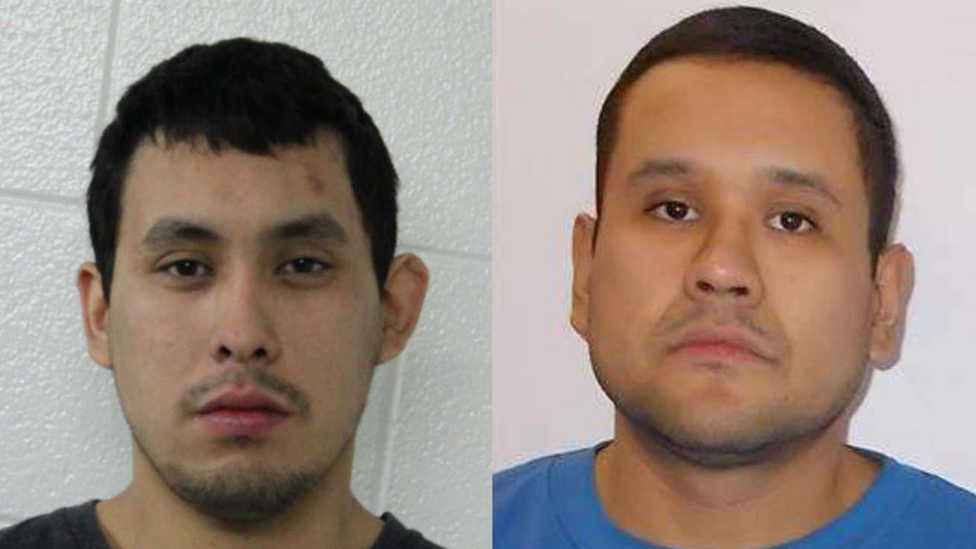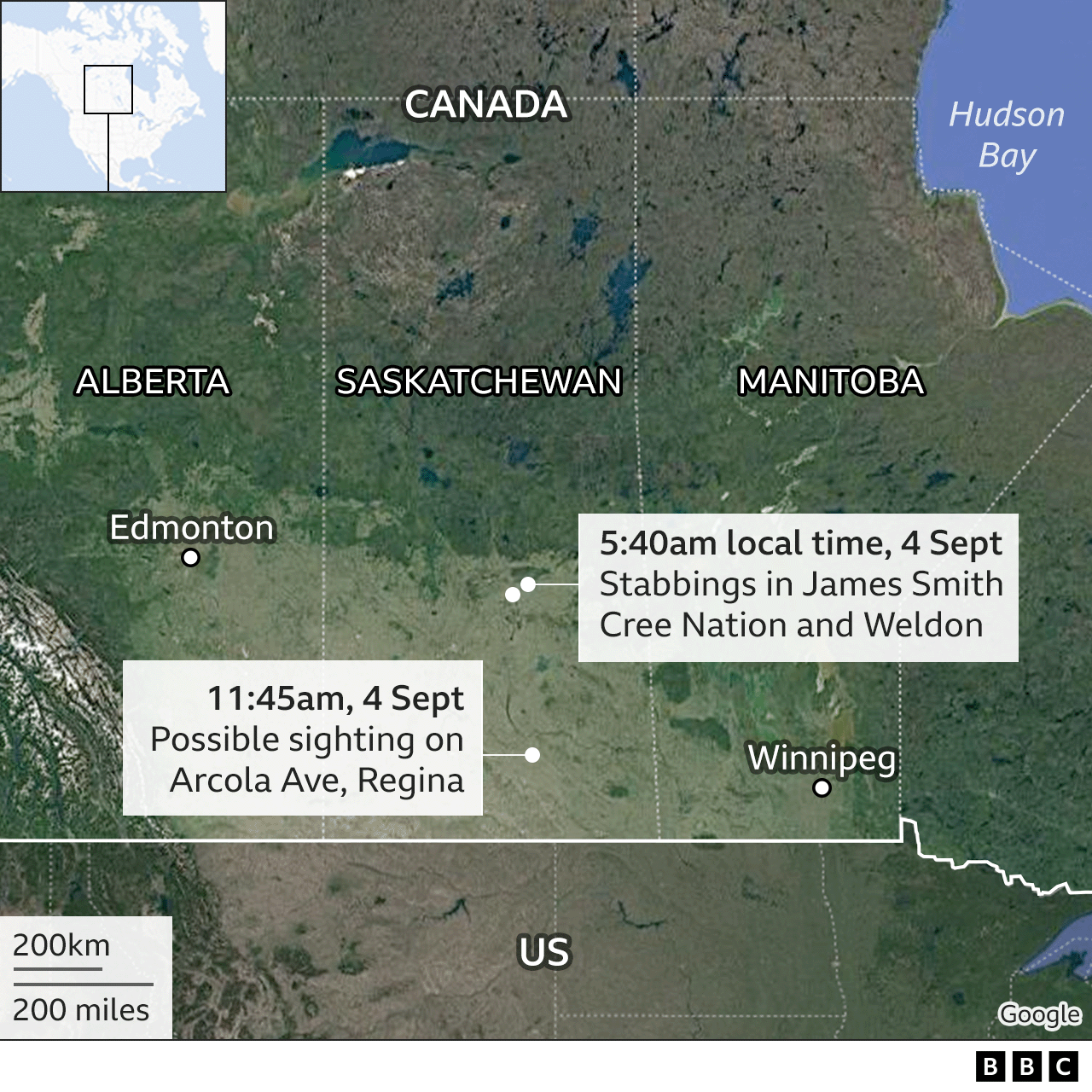Saskatchewan stabbings: Suspects still at large, police say
- Published
Watch: Canadian police tell stabbing suspects to turn themselves in
Two murder suspects are still at large after 10 people were stabbed to death in one of the worst acts of violence in Canada's recent history.
Myles Sanderson, 30, and Damien Sanderson, 31, have been charged with murder, despite not being arrested.
The attacks - which left another 18 people injured - happened in a remote region of Saskatchewan on Sunday.
In the city of Regina, where the suspects were last seen, families are in mourning and communities on edge.
There are no obvious signs of a manhunt here - except for the sound of emergency alerts ringing on mobile phones warning of "two adult male suspects" who "continue to be at large".
The city is quiet, with many shops shuttered for the Labour Day long weekend.
In Victoria Park in the city centre, families called the attacks "horrific" and "sad". "It's on everyone's mind," Deena Arthur told the BBC.
"They're not monsters, they're people. Something has happened to them to make this happen."
Another woman said the stabbings have left her "stomach in knots". She wonders how something like this could happen in Canada.
The killings have rocked the typically peacefully prairie province of Saskatchewan, with police investigating 13 separate crime scenes.
"This kind of violence, or any kind of violence has no place in our country," said Prime Minister Justin Trudeau on Monday.
He said that "tragedies like these have become all too commonplace" - adding that Saskatchewanians and Canadians would be there for each other in "times of difficulty and anguish".
Many of the victims were residents of the remote James Smith Cree Nation, home to about 2,000 people - leaving members of Canada's indigenous community especially shaken. A state of emergency was declared in Saskatchewan.
As news of the stabbings broke, a dangerous person alert was sent to all mobile phones across the provinces of Saskatchewan, Manitoba and Alberta.
Numerous checkpoints have been set up and drivers have been urged not to pick up hitchhikers. Officers from the three provinces are involved in the search.
Prime Minister Justin Trudeau called the spate of killings "horrific and heartbreaking". , external

The suspects have been identified as Damien Sanderson (left) and Myles Sanderson
Canadian media have identified some of the victims - though no official details have been provided by authorities.
"Mostly we're all related here, so it's pretty hard," Chakastaypasin Chief Calvin Sanderson - one of the elected leaders in the region - told the Regina Leader Post.
The leader of Saskatchewan's opposition party, the New Democratic Party's Carla Beck, told the BBC the incident had "shaken" the residents of a "tight-knit community".
Saskatchewan's Royal Canadian Mounted Police said they had been searching for Myles Sanderson for more than three months.
In May 2022 the 30-year-old stopped meeting with his parole officer and since then has been classified as "unlawfully at large".
Police have not indicated a motive - but said they believe some victims were targeted, while others were random.
Chief Bobby Cameron of the Federation of Sovereign Indigenous Nations suggested the attacks could be drug-related.

Timeline of events
05:40 - local time on 4 September (11:40 GMT) - police receive the first call about a stabbing in the James Smith Cree Nation. More calls start coming in within minutes
07:12 - police tell the public to seek immediate shelter and issue a Dangerous Persons Alert
07:57 - police reveal the names, descriptions and pictures of the two suspects
08:20 - the Dangerous Persons Alert is extended to the whole Saskatchewan province
11:25 - the search for the suspects is further widened to the neighbouring provinces of Manitoba and Alberta
12:07 - police alert the public that the suspects' vehicle had been spotted in Regina, the provincial capital

Related topics
- Published8 January

- Published5 September 2022
